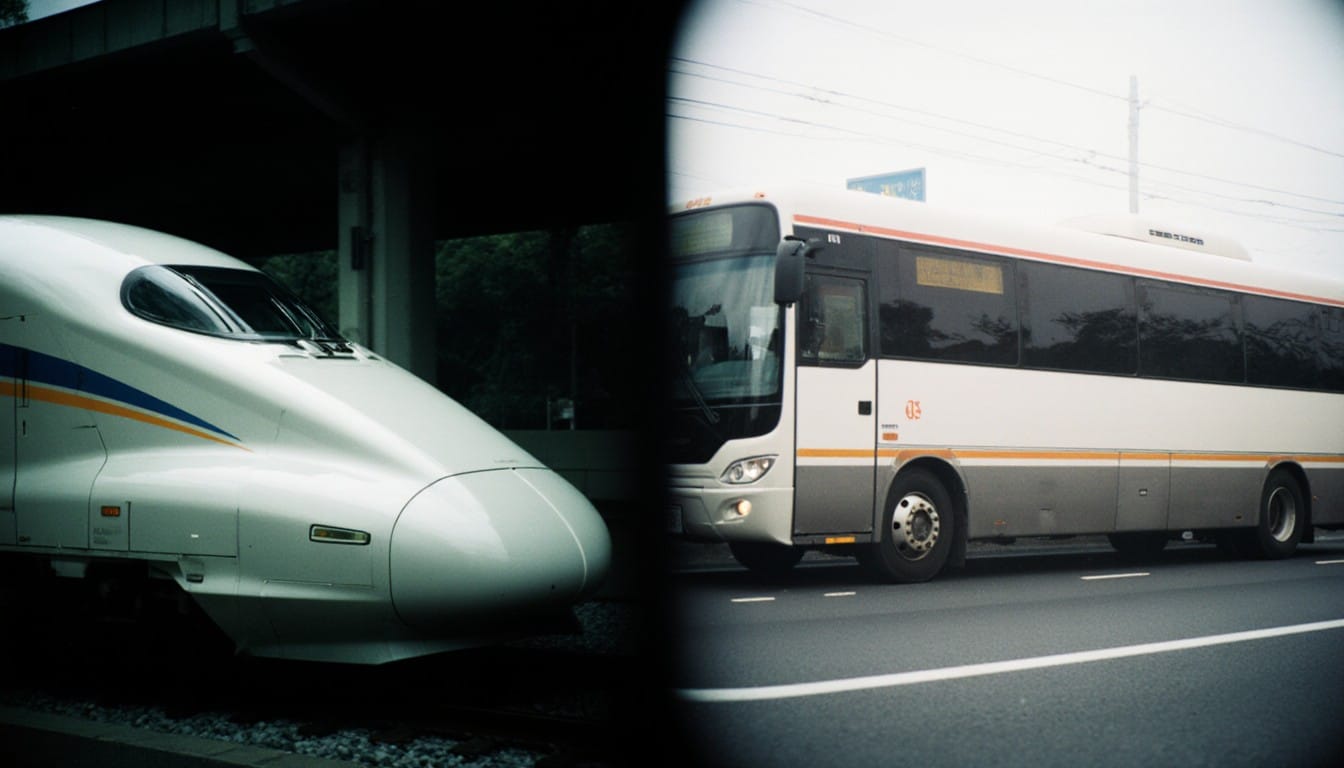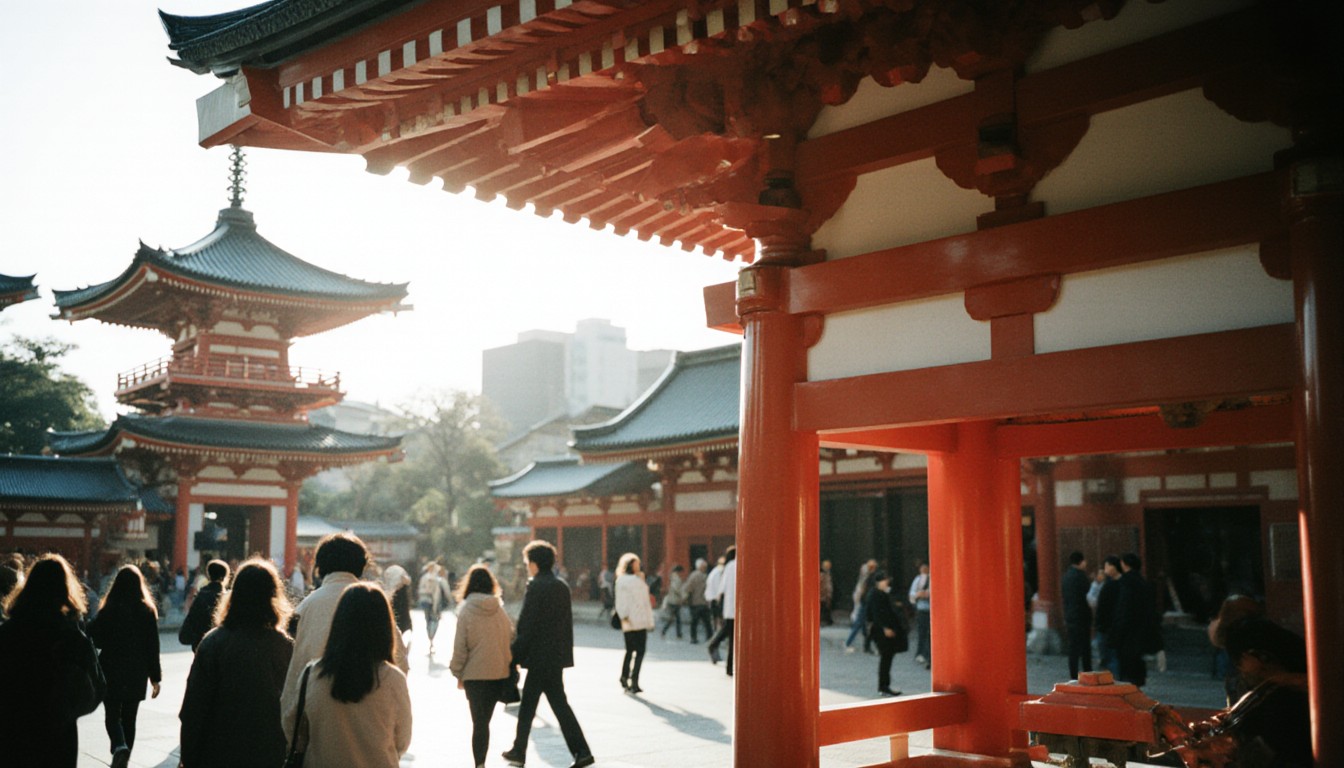Japan. The name itself conjures a mind-blowing blend of ancient tradition and futuristic technology. It’s a country that went from being on my bucket list to becoming a place I’ve revisited four times. Why? Because no other destination on Earth offers such a profound, seamless mix of serene temples, electric cityscapes, and world-class cuisine. But planning a trip can feel overwhelming. You’re hit with questions about the JR Pass, budgeting, and navigating a culture that’s famously polite but complex. That’s why I’ve created the ultimate Japan Travel Guide for 2025.
I’m not just going to give you a generic itinerary. I’m going to break down the data, share my personal wins (and mistakes), and give you the actionable strategies you need to not just visit Japan, but to experience it like an insider. We're talking hard numbers, specific app recommendations, and the secrets I’ve learned to save money and unlock a more authentic side of the country.
### Why 2025 is the Year to Finally Visit Japan
Let's get straight to the point. Post-pandemic travel has reshaped the landscape, and Japan is at the epicenter of this shift. In 2024, tourist numbers finally surpassed pre-pandemic levels, with over 3 million visitors in a single month for the first time ever. This trend is only set to accelerate in 2025.
But here’s the value proposition for you: while demand is high, the Japanese Yen is still historically weak against the dollar. As of late 2024, the exchange rate hovered around ¥155 to $1 USD. This translates to a staggering 25-30% increase in your purchasing power compared to five years ago. Your budget for that mind-blowing sushi dinner or that ryokan stay just stretched significantly further.
This isn't just about a favorable exchange rate. Japan has doubled down on its tourism infrastructure. We're seeing more digital integration (welcome, digital Suica/Pasmo cards on your smartphone), increased multilingual support in rural areas, and a boom in unique, experience-based tours that go beyond the typical temple run. The country is more accessible than ever, but the window for this perfect storm of high value and renewed energy won't last forever.
### Decoding the Japan Rail Pass: Is It Still Worth It in 2025?
The Japan Rail (JR) Pass used to be a no-brainer. For years, it was the golden ticket to unlimited travel on the country's world-class Shinkansen (bullet train) network. Then, in late 2023, prices skyrocketed by nearly 70%. This single change completely altered the travel calculus for Japan.
So, is it still worth it? The short answer: it depends entirely on your itinerary.
I ran the numbers based on a classic 10-day “Golden Route” trip (Tokyo -> Hakone -> Kyoto -> Tokyo) using 2025 pricing.
- Individual Tickets: A one-way reserved seat from Tokyo to Kyoto costs approximately ¥14,000. A round trip is ¥28,000. Add a side trip to Hakone, and you're looking at around ¥35,000.
- 7-Day JR Pass: The cost for a 7-day ordinary pass is ¥50,000.
In this common scenario, the JR Pass is a clear financial loss of ¥15,000.
The JR Pass only becomes valuable if you plan a hyper-aggressive, long-distance itinerary. For example, if you were to travel from Tokyo to Kyoto, then to Hiroshima, and back to Tokyo all within a 7-day window.
Here’s a simple comparison table to help you decide:
Japan Transportation Comparison (2025 Estimates)
| Method | Best For | Estimated Cost (7-Day Example) | Pros | Cons |
|---|---|---|---|---|
| Nationwide JR Pass | Fast-paced, long-distance travel covering multiple regions (e.g., Tokyo -> Hiroshima -> Kanazawa). | ¥50,000 | Convenience of one pass; flexibility for spontaneous day trips. | Very expensive; not valid on the fastest Nozomi/Mizuho trains. |
| Individual Tickets | Standard "Golden Route" itineraries (Tokyo-Kyoto) or trips focused on one or two cities. | ¥30,000 - ¥40,000 | Pay only for what you use; access to the fastest Nozomi trains. | Requires booking each leg separately; can be less flexible. |
| Regional Passes | Deep dives into a specific area (e.g., Kansai Thru Pass for Kyoto/Osaka/Nara or Hakone Free Pass). | ¥5,000 - ¥15,000 | Extremely cost-effective for concentrated travel. | Limited geographical area; may need to combine with other tickets. |
| Highway Buses | Budget travelers with more time than money. | ¥15,000 - ¥25,000 | The cheapest option for inter-city travel. | Significantly slower than trains; can be less comfortable. |
Actionable Tip: Before you even think about buying a JR Pass, use the official Japan Rail Pass Calculator. Plug in your tentative itinerary, and it will tell you in seconds whether the pass will save you money. This is the single most important data-driven decision you will make.
### How to Budget for Japan (Without Eating Cup Noodles)
Japan has a reputation for being expensive, but this is one of the biggest myths in travel. Thanks to the weak yen, a trip to Japan in 2025 can be surprisingly affordable if you're smart. On my last trip, I tracked every single yen. Here’s a realistic, data-backed budget breakdown per person, per day:
- Budget Traveler: ¥8,000 – ¥12,000 ($50 – $75 USD)
- Accommodation: Hostel dorms or budget guesthouses.
- Food: Convenience store (konbini) meals, ramen shops, standing soba bars.
- Transport: Local subways, minimal long-distance travel.
- Mid-Range Traveler: ¥15,000 – ¥25,000 ($95 – $160 USD)
- Accommodation: Business hotels (like APA or Dormy Inn) or well-located Airbnbs.
- Food: A mix of konbini breakfasts, casual restaurant lunches, and one nice izakaya or sushi dinner.
- Transport: Individual Shinkansen tickets, extensive subway use.
- Luxury Traveler: ¥40,000+ ($250+ USD)
- Accommodation: 4-5 star hotels or traditional ryokans with kaiseki dinner.
- Food: Omakase sushi, high-end wagyu, craft cocktail bars.
- Transport: Green Car (first class) on the Shinkansen, taxis, private transfers.
Insider Tip: The secret weapon for budget and mid-range travelers is the Japanese convenience store, or konbini. 7-Eleven, FamilyMart, and Lawson are not like their Western counterparts. They offer a shocking variety of high-quality, delicious, and cheap meals. You can get a fantastic onigiri (rice ball) for ¥150, a katsu sando (pork cutlet sandwich) for ¥400, and a hot coffee for ¥120. Eating one meal a day from a konbini can save you over $200 on a 10-day trip.
### The Ultimate 10-Day Itinerary for First-Timers
Don't try to see everything on your first trip. Japan is a country that rewards depth over breadth. This itinerary is optimized for efficiency, impact, and experiencing the essential “Golden Route” without feeling rushed.
- Days 1-4: Tokyo (The Future is Now)
- Day 1: Arrive at Narita (NRT) or Haneda (HND). Get your Suica/Pasmo card on your phone. Head to Shinjuku, check in, and ascend the Tokyo Metropolitan Government Building for free panoramic city views.
- Day 2: Culture Shock. Start at the serene Meiji Jingu shrine, then dive into the chaos of Harajuku's Takeshita Street and the world-famous Shibuya Crossing.
- Day 3: Old & New. Explore the ancient Senso-ji Temple in Asakusa, then head to Akihabara for a sensory overload of anime, arcades, and electronics.
- Day 4: Market & Travel. A morning visit to the Tsukiji Outer Market for the freshest sushi breakfast of your life. In the afternoon, take the Shinkansen to Kyoto.
- Days 5-7: Kyoto (The Heart of Tradition)
- Day 5: Iconic Shrines. Start early at Fushimi Inari-taisha to walk through the thousands of red torii gates before the crowds arrive. In the afternoon, visit the golden Kinkaku-ji pavilion.
- Day 6: Bamboo & Geishas. Wander through the ethereal Arashiyama Bamboo Grove in the morning. In the evening, explore the Gion district, the famous geisha quarter. Be respectful—no paparazzi behavior.
- Day 7: Day Trip to Nara. Take a 45-minute local train to Nara Park, home to over 1,200 free-roaming, bowing deer. It's a magical and unforgettable experience.
- Days 8-10: Osaka & Departure (Eat, Drink, Repeat)
- Day 8: Travel to Osaka (30 mins from Kyoto). Check in and immediately dive into the Dotonbori district. This is Japan's kitchen. Eat everything: takoyaki, okonomiyaki, kushikatsu.
- Day 9: Castle & City. Visit the magnificent Osaka Castle in the morning. Spend the afternoon exploring the trendy Shinsekai neighborhood.
- Day 10: Fly home from Kansai International Airport (KIX).
### Insider Tech: The 5 Apps You Absolutely Need
Navigating Japan is incredibly easy with the right digital tools. Forget paper maps. Load these onto your phone before you go.
- Google Maps: It’s king. It has hyper-accurate train schedules, platform numbers, walking directions, and even tells you which train car to board for the easiest transfer.
- Google Translate: The camera function is a lifesaver for reading menus and product labels. Download the Japanese language pack for offline use.
- Suica/Pasmo on Apple Wallet/Google Pay: This is a non-negotiable game-changer. You can add a digital transit card to your phone and tap-to-pay for all subways, buses, vending machines, and konbinis. You can recharge it instantly with your credit card, skipping ticket machines entirely.
- GuruNavi / Tabelog: These are Japan's Yelp. While the interface can be a bit clunky, they are invaluable for finding authentic, highly-rated restaurants reviewed by locals, not just tourists.
- Jorudan / Navitime: These are powerful transit planning apps, slightly more detailed than Google Maps. They are the best tools for checking the exact cost of train routes when deciding on the JR Pass.
### Frequently Asked Questions (FAQ)
Q1: Do I need to speak Japanese?
No. In major cities and tourist areas, you'll find plenty of English signage and support. However, learning a few basic phrases like “Arigato gozaimasu” (Thank you very much), “Sumimasen” (Excuse me / Sorry), and “Kore wa ikura desu ka?” (How much is this?) will go a long way and is greatly appreciated.
Q2: Is Japan safe for solo travelers?
Japan is consistently ranked as one of the safest countries in the world. It is exceptionally safe for solo travelers, including women. You can walk around at night in major cities without concern. The biggest risk is probably leaving your umbrella on the train.
Q3: Should I get a pocket WiFi or a SIM card?
This depends on your needs.
- eSIM: The most convenient option for modern phones. Buy and install it before you leave. Brands like Airalo or Ubigi are reliable.
- Pocket WiFi: Best for groups or if you have multiple devices. You can rent one for pickup at the airport.
- Physical SIM: A good option if your phone doesn't support eSIM.
I personally use an eSIM for its sheer convenience. The connection is fast and reliable everywhere.
Q4: How do I handle cash and credit cards?
While Japan is becoming more credit-card friendly, it is still a cash-based society, especially in smaller towns, markets, and local restaurants. Always carry at least ¥10,000-¥20,000 in cash. You can withdraw yen from ATMs at any 7-Eleven, which are ubiquitous and have the best acceptance rates for foreign cards. Use your credit card for larger purchases like hotels and department stores.
### Your Japan Journey Starts Now
Japan is more than a destination; it's an experience that recalibrates your senses. It’s the quiet reverence of a Kyoto temple garden, the electric pulse of a Tokyo crosswalk, the umami explosion of a perfect bowl of ramen.
By leveraging the current economic advantage, making smart, data-driven choices about transportation, and using the right technology, you can unlock a trip that is not only affordable but deeply transformative. The secrets are out. The tools are in your hands.
The only question left is: are you ready to go?






